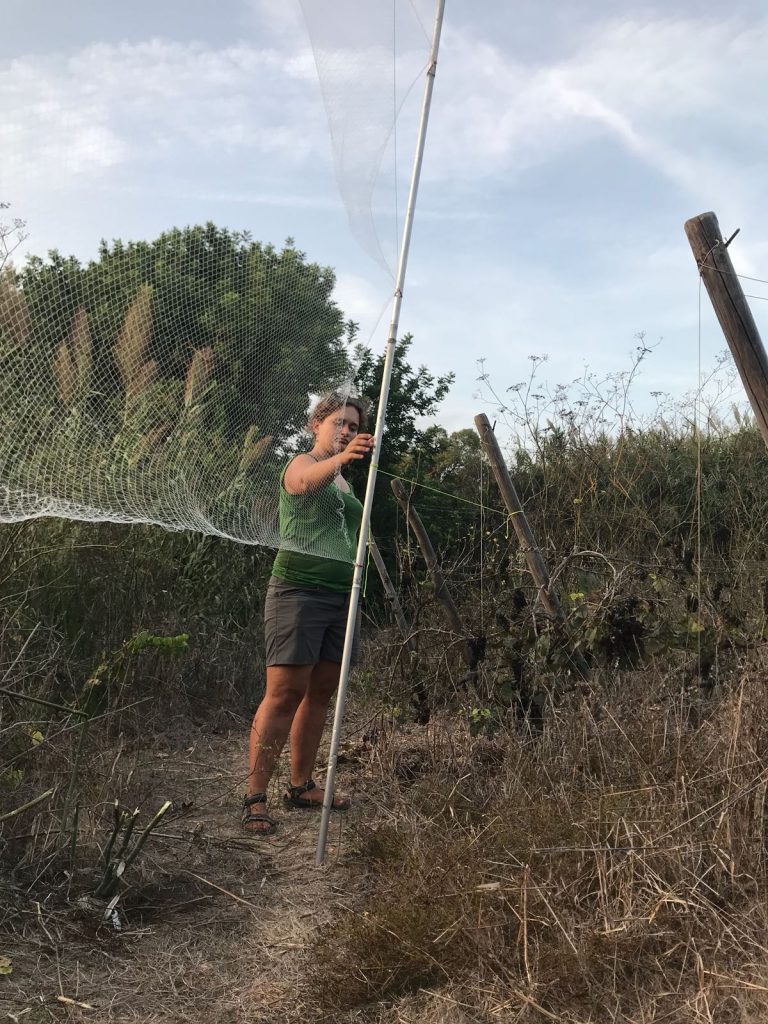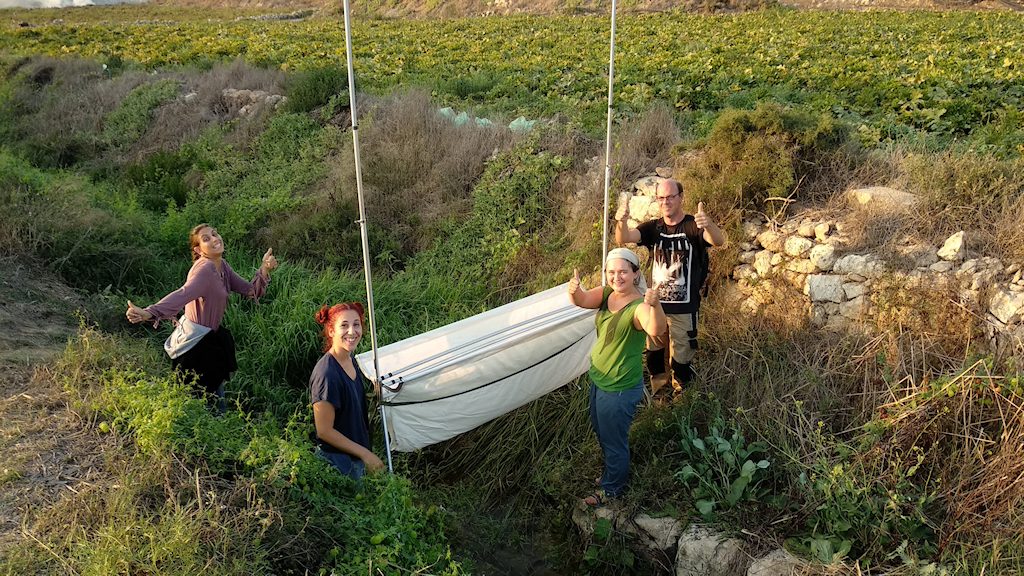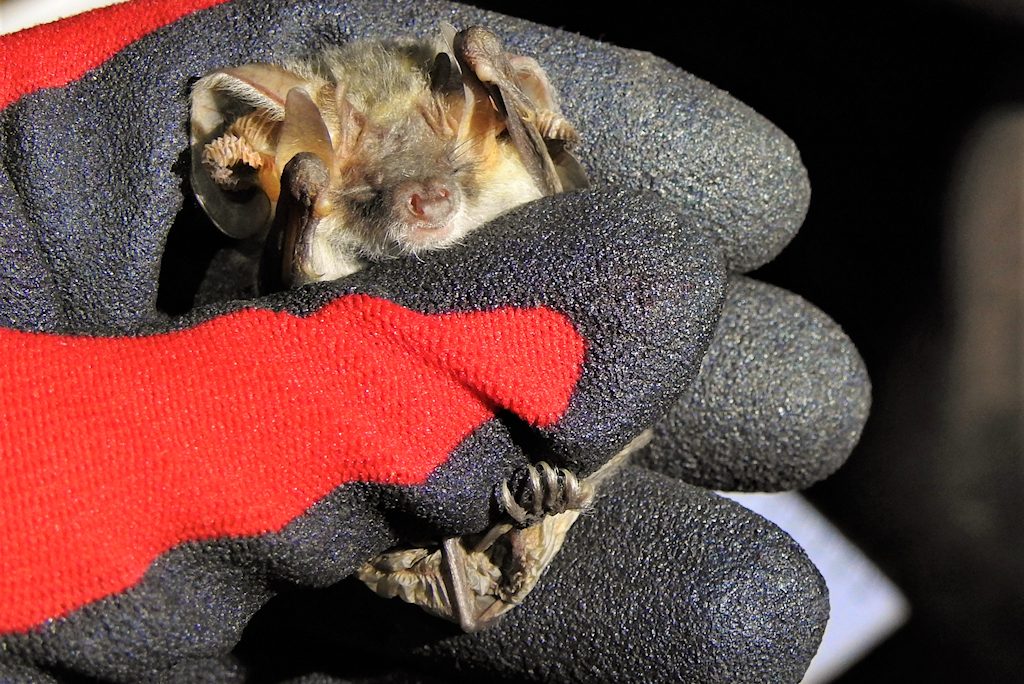
There is nature within urban areas, it is only somewhat hidden. Elena Portelli from Akustika Project, whose bat conservation initiative involves citizen science, illuminates on how the project is beneficial for protecting the urban environment and heritage.
by Rachael Scicluna
Collage by Isles of the Left
Rachael Scicluna: I’m aware you are working on bat conservation. Could you tell me more about the Akustika project?
Elena Portelli: The project started as part of my M.Sc. last year. I studied Wildlife Biology and Conservation at Edinburgh Napier University. When I was considering my Masters topic, I wanted to focus on ‘hot topics’ in relation to the big challenges that the Maltese environment is facing. My thesis studied Pipistrelles in the urban habitat. This allowed me to indirectly explore the issue of construction and urbanisation, land degradation and public access. Bats are the largest group of mammals in Malta (the second largest group in the world after rodents), a species group that has been relatively understudied globally.
I was inspired by the Bat Conservation Trust method which uses citizen science for the vast majority of the data collection. The Oxford definition of a citizen scientist is the following:
scientific work undertaken by members of the general public, often in collaboration with or under the direction of professional scientists and scientific institutions.
I trained a group of around 20 people to use bat detectors and this helped increase the survey effort to the point where I could then extrapolate from the data. The study was designed as a pilot, with the intention of testing this method, citizen science, for data collection over a wider variety of habitats and species. After the success of the pilot, we have now just launched project Akustika, which is the second phase where we start widening our remit, always including citizen science when possible.
[beautifulquote align=”left” cite=””]Citizens of all ages can join the surveys after a short training session.[/beautifulquote]
Our first activities after launching involved mist netting. This was yet another pilot to trial the inclusion of volunteers in setting up and observing this activity. Mist netting is the setting up of fine nets across commuting or feeding grounds for bats, to capture them in flight. This activity is only allowed with restrictions, specifically under license from the Environment and Resources Authority (ERA). Only licensed and vaccinated individuals are allowed to handle bats, as they are highly sensitive creatures. Such a method however allows us to collect valuable detail regarding biological variations in the species that occur locally. We have now started re-surveying the urban habitat. We are using high-end bat detectors. Citizens of all ages can join the surveys after a short training session.
Across the year, we will be piloting different methodologies for uptake by citizen scientists, targeting different species and habitats as the project moves forward.

Has citizen science been successful? And how do volunteers feel about the relationship between urbanisation and conservation?
Yes. In fact there was an increase in interest from last year to this year. The only thing that changed is the concern for the environment as people feel that it is being taken away from them. Scientific research is not always for people to join and to get involved. Such involvement in scientific projects opened up the opportunity for people to join in myriad ways and from different backgrounds – even skills such as design or IT can be used hand in hand with science. People want to use their skills in order to protect the environment. And we are providing this opportunity to the community. It has been a positive change.
Who are the volunteers?
We have a big cohort of young student volunteers in their 20s, especially Earth Systems students. They are very proactive and we are very proud of them. However, we also have middle aged and older people who might have missed out on doing activism in their youth and they also bring their kids with them. We have an intergenerational cohort with a relatively small group of volunteers aged 20 and 25 years and then those that fall somewhere between 35 and 70 years, and a handful of teenagers.
Did this volume of volunteers change the project in any way?
Yes, it did. In the beginning we wanted to explore private locations, however we excluded this as a possibility due to access issues. Now we have people approaching us, offering access for surveys. This is very positive for the project. Bat surveys are done at night and this might be past people’s bedtime. But bat detectors can be easily left in the garden for example, and such an activity cuts across all generations. We are trying to find ways to include also those who are interested in volunteering but do not necessarily enjoy going out in the field at night.

What do you think is the relationship between conservation, the built environment and our heritage?
There is a direct relationship between bats and the built environment. There is a lot of scientific discourse around the fact that bats use urban areas—some species of bats had to adapt to the built environment. This does not necessarily mean that it is beneficial to them, but in our modified environment some species have fared well using the built environment to roost, feed and commute.
[beautifulquote align=”left” cite=””]Awareness of bats’ roosting grounds can attract attention to the demolition of old buildings with no architectural or sentimental value, which people would not care about otherwise.[/beautifulquote]
There is nature within urban areas, it is only somewhat hidden. For example, this can raise awareness around the demolition of old buildings in order to create new ones. Before this was not a big issue on people’s mind. They might have cared for a field, which risked being developed, but not about a building, unless it had historical or sentimental value.
Since bats roost in buildings this could also bring about awareness of our heritage. For example, historical structures like rubble walls and fortifications may have bat roosts in them. In fact, it is illegal to destroy a bat roost, and prior to changes to buildings with a potential for bat roosts, bat surveys may need to be carried out as part of the Environment Impact Assessment. In the UK, if you renovate a barn you have to do more than one bat survey as they may be using the space seasonally.
[beautifulquote align=”left” cite=””]Even the severe pruning of mature trees could potentially be destroying roost habitat for bats.[/beautifulquote]
We would like to put bats in the forefront of people’s minds when modifying or demolishing buildings. Even the severe pruning of mature trees could potentially be destroying roost habitat for bats. The worst part is that the bats might be inside these structures while demolition is happening, as they are dormant during the day and some species are only a few centimetres long, virtually invisible in cracks.

How could buildings, including new buildings be reinstated back into the eco-system in a way that can accommodate the bat population? For example, would green roofs or green walls help? Or ‘life between buildings’ that is often forgotten by urban planners? How could planned design be beneficial?
We have not yet studied green roofs and the effects they have on bats. However, there are many ways that urban design could attend to bat conservation. We have found that urban green areas are feeding grounds for them. They also act as stepping stones to the natural environment. So what I found through my M.Sc. research is that although urban green areas are very important for bats, it is more important to have a natural resource close to their urban habitat. I do not want to downplay the importance of the natural environment compared to green roofs but it is always good to include a food source within the urban environment, especially if it includes water which is a limited resource in Malta.
[beautifulquote align=”left” cite=””]A tree line from an urban garden towards the edge of the town into a woodland would be a perfect avenue for bats to follow.[/beautifulquote]
Urban planning in general could benefit bats because they use linear features such as tree lines for commuting. That could create a wildlife corridor for bats from their roost that leads them to a natural area. This type of urban planning is lacking in Malta. A tree line from an urban garden towards the edge of the town into a woodland would be a perfect avenue for bats to follow. First, this will help bats avoid main roads; second, there will be a feeding opportunity for them; and third, they are by nature inclined to follow linear features. In absence of trees they will follow main roads with the risk of being killed by cars. It would be good to steer them away from dangerous areas.
Therefore, urban planning could cater very well for bats if there was the knowledge present in order to cater for such needs. This is an avenue for further studies.
What could the community do in order to help bats?
In your own house there is a way that you can create a bat friendly garden. It may sound unpopular but it works. There is a list of specific plant species that attract insects that bats eat. In Malta bats eat insects such as mosquitoes, flies, and moths. Bats eat thousands of insects at night, therefore attracting them to your garden could help keep populations of unpopular insects down especially in summer. Also, during summer bats find it hard to drink water. We have seen bats drinking from swimming pools or fountains which have chlorine in them. Bats need a clear, flat water surface – potentially flat trays would be efficient. Through echolocation, they ‘see’ water very clearly.
[beautifulquote align=”left” cite=””]Creating a bat friendly garden with specific plants, that attract insects that bats feed on, would help keep the numbers of unpopular insects down, especially in summer.[/beautifulquote]
People have also shown interest in building bat boxes. Historically, bat boxes are very popular in northern countries, however these measures may be ill-suited for southern climates. The reason is that these bat boxes were constructed for Northern countries and will be insulated and dark. Therefore, bats will potentially not make use of bat boxes in summer due to our hot climate, however in winter it is a possibility. We would still encourage building them—imagine having the first recorded use of a bat box in Malta! Checking a bat box requires a license and needs to be done by professionals.
Another thing that the community could do is that if they come across any bat roosts, they should report to ERA. This will help document these sites, as they are highly sensitive and require strict protection from disturbance.
If the public visits caves, tunnels or other spaces that have resting bats within them, we advise them to leave the area immediately, and refrain from social media posts. Body heat can be enough to ‘wake up’ a bat within an enclosed space. This type of disturbance is potentially fatal, as they have a very fast metabolism and will die if there is no prey around.
And what about the political aspect? What else could be done?
There is a lot that could be done by politicians. The main thing is to include bats specifically as part of the Environment Impact Assessments (EIA) especially during the restoration of buildings and road works because bats cut across commuting pathways.
[beautifulquote align=”left” cite=””]Bats surveys should to be carried out as part of the Environment Impact Assessments (EIA), especially during the restoration of buildings and road works.[/beautifulquote]
We would hope that the inclusion of citizen science can expand our surveys up to a 100% of Malta and Gozo. This will give us a clear picture of what there is and where. It would be ideal if this happened at an institutional and national level.
Lack of funds is a limiting factor in Malta. For example, we have a low number of licensed individuals, lack of standardised methodologies, lack of equipment and specific funding towards bat conservation, and towards research generally.
Greenhouse is trying to create such standard methodologies that can be replicated by anyone and so that it can be transferable from year to year. This is what the future should hold.
There is also a lack of specialised enforcement bodies towards infringements related to bats: roost disturbance and destruction, persecution, collection etc. intentional disturbance is not common in Malta, however, lack of care and knowledge may sometimes be greatly detrimental regardless of intent.
Do you think that you should team up with other nature-related organisations?
Yes. We have already reached out to all organisations who are working with bats including other researchers. We are also very open to other collaborations especially for those who want to participate in the surveys. We are also collaborating closely with Nature Trust because they rehabilitate bats. And ERA is informed of all our activities, particularly as they issue permits as necessary.
In October we will be conducting more surveys in urban areas. We have 7 localities that we are going to be surveying. People can sign up for a short training session. The survey takes about 2 hours and starts just after sunset. The volunteers will use a bat detector for the survey. At the end of the survey a report will be circulated which will outline all the data collected.
The role of the community is extremely important as it will help us gather invaluable data about bats and help us raise much-needed awareness about conservation and the environment!
Leave a Reply